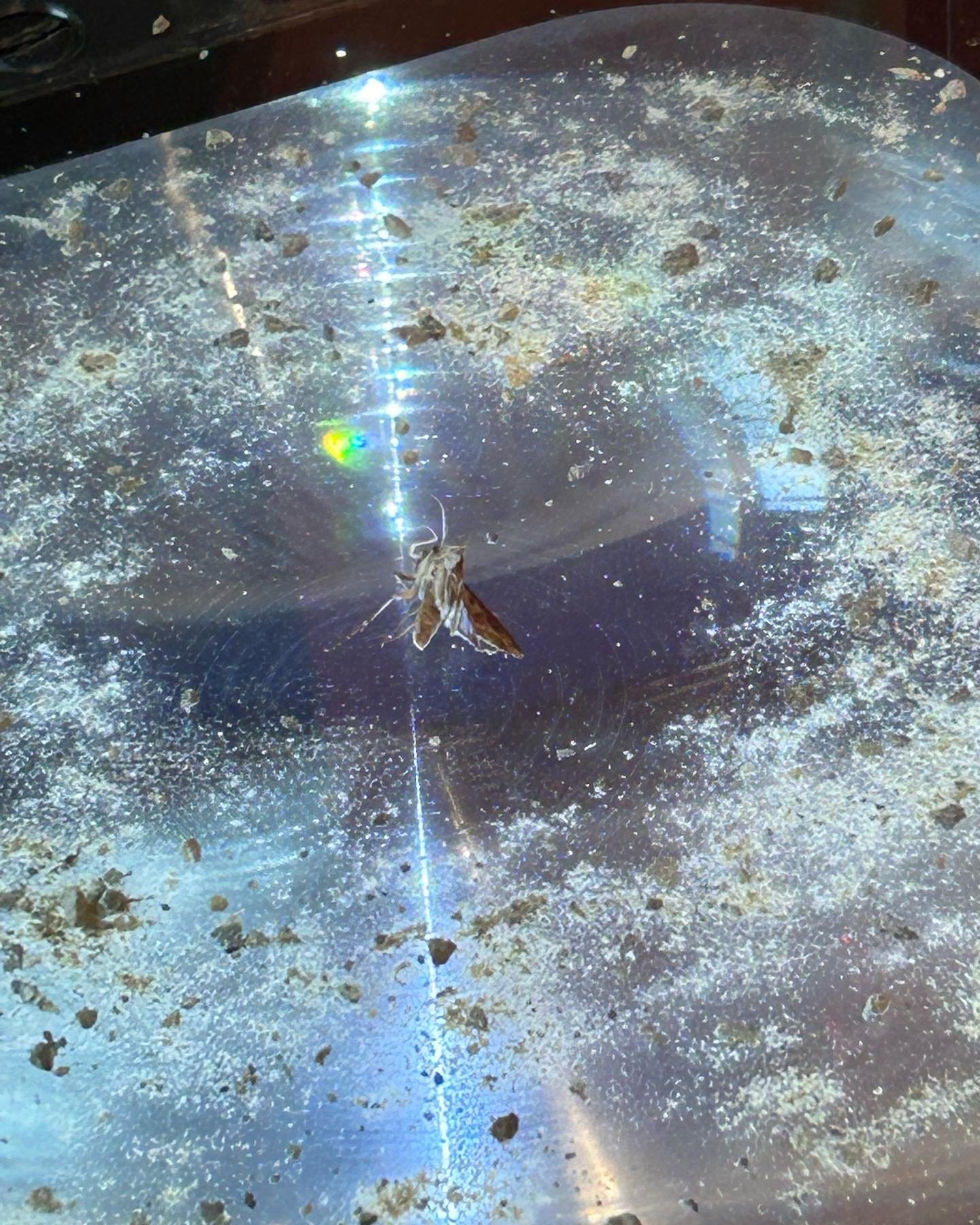mothlight, Marguerite Carson
Text
The history of the vitrine is a charged one; rooted in Victorian obsession with collecting, display and preservation. Tied inextricably to the extractive nature of knowledge, its classification, and the church’s elevation of relic-objects from the un-remarkable to the realms of the precious and powerful.
In art the vitrine is an uncomfortable space, a barrier or isolation chamber for sculpture, a separation from the embodied and visceral nature of the object.
Existing in this discomfort Mothlight explores the vitrine as site, a place where time stops, doesn’t move, air flow ceases, circulation slows, nothing is breathing.
Sealed behind glass there is an interiority, filled with a muffled and inflexible temporality. Vitrines flatten time or remove it, disallowing it to take its course, actively battling decay.
This is a work that is about looking, about the gaze, about the power of the institution to freeze something and to display it, mute. To display, as if to splay, as if to pin open and vulnerable permanently. To render without air and therefore without life. The vitrine is a killing.
A projection is a transmutation [of form to image] thrown to wherever it lands. The work enacts a double looking, through the glass pane of the vitrine and the glass lens of the projector, creating an image which is ripped from the (di)splayed moth lying amid its dust. Dust - the ghost of industry, sourced from Triabunna and the now renovated wood chip mill which at its peak was the largest in the world. In its removal from form the image becomes surface-less, liquid and etherial. Cast in the light from beneath, focussed by the Fresnel lens on which it lies the moth finds new life in its familiar, a mirroring takes place as the image flips not once [through the lens] but twice as the mirror in the projector which would usually allow script to be read right-way-round on such a projection, has been removed.
A projection is an extension, a protrusion into space, seeking escape. The moth lives again as the most simple of indexical marks, an inscription or figure that forms the building blocks of writing and the smallest constituent part of a typeface; a glyph.
The image enacts its escape not in the throw of the projected but in another transmutation, into writing and out of the realm of the visual - into the spoken. Only in the voice can the moth and its image, its familiars, escape the trapping glass and the pinning gaze. Freed from the scene.
-
Marguerite (they/them) b. Edinburgh 1998 is an artist and writer based currently in nipaluna/Hobart working between writing, the curatorial, sculpture and film. Often working collaboratively they are interested in themes of correspondence, navigation, mythmaking and information. They graduated in 2019 from Glasgow School of Art with BA(Hons).
